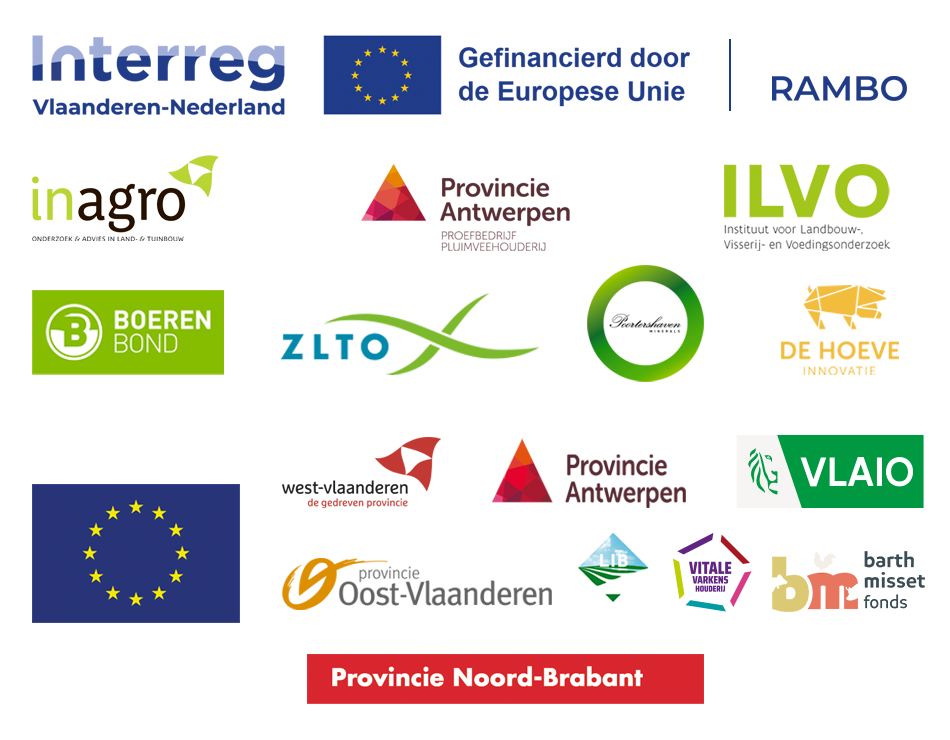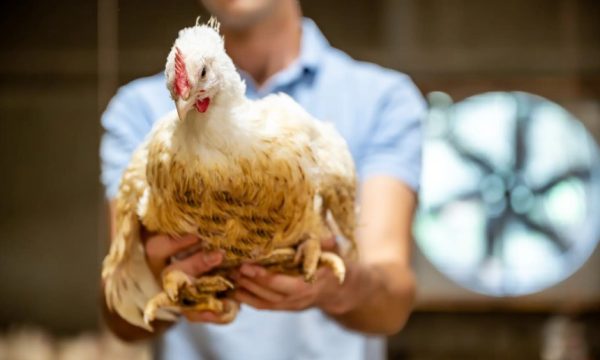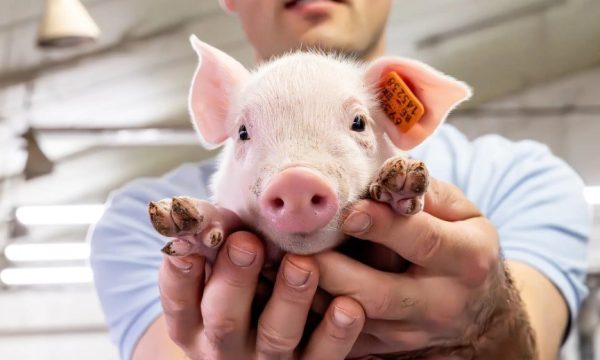Project news How to curb ammonia emissions in poultry and swine?
One year after the start of the Interreg Flanders-Netherlands project RAMBO, the project partners are taking stock. RAMBO stands for Reduction of Ammonia through Source-Oriented and Flanking Solutions. Within this project, existing measures and techniques are tested, demonstrated and evaluated for their applicability and effectiveness to reduce ammonia emissions on pig and poultry farms. In addition to ammonia, side effects such as methane emissions and impact on animal health and welfare are also considered. The first trials have been started or just completed. According to initial findings, a number of measures and techniques show great potential.
After a thorough selection process, the RAMBO project arrived at 16 measures and techniques with potential: ten for poultry farming (five for layers and five for broilers) and six for pig farming. They are solutions through modifications in animal feed, housing, barn climate or management. In three test and demo sites in Flanders and the Netherlands, they are now evaluating their operation, effectiveness and feasibility.
Initial findings and results
De Hoeve Innovation is measuring barn emissions on two pig farms with daytime fumigation. Daytime defattening is a source-based measure that can greatly reduce both ammonia and methane, and has the added benefit of improving animal health and welfare. Preliminary results show clear emission patterns and variations among similar departments. Data from initial measurements suggest that the technique is promising.
At ILVO, Flanders Research Institute for Agriculture, Fisheries and Food, trials of different emission-reducing measures in the fattening pig department is being done. ILVO is currently testing feed modifications. The concentrations of ammonia, methane and CO2 at the outlet of the stables are measured with an FTIR gas analyzer, with continuous monitoring of ammonia concentrations. The first trial examines the addition of zeolites to the feed. Zeolites are porous materials that can capture small molecules such as ammonia. The second test is lowering electrolyte balance. This feed adjustment acidifies the animals' urine, resulting in lower emissions. The trial is still in progress, but initial results indicate lower emissions where these measures have been applied.An Axetris sensor has been installed in the laying hen house at the Poultry Industry Pilot Farm, which continuously measures the ammonia, CO2 and moisture content of the air from 12 chicken houses. This setup compares four housing systems, two breeds of layers, at different frequencies of litter removal from the section, and at different frequencies of manure belt rotation in the sections. Initial findings show that ammonia development in the aviary housing is significantly higher than in the enriched cage and Veranda Code2+ houses. "In broilers, we are testing different litter materials and feed compositions in the new broiler house. In the new broiler house, a Gasmet gas analyzer based on the FTIR technique is used; in the older broiler house, electrochemical Dräger sensors were installed. The first measurements show that ammonia reductions can be achieved through targeted choices in litter materials," says expert poultry researcher Tom Van Hertem of the Poultry Breeding Experiment.
According to initial findings, a number of ammonia reduction measures and techniques in swine and poultry barns show great potential. "They are all being tested in different seasons because the barn climate also has an impact on ammonia development," he said. The full results of all tests are expected to be available by the end of summer 2025," Tom Van Hertem further explained.
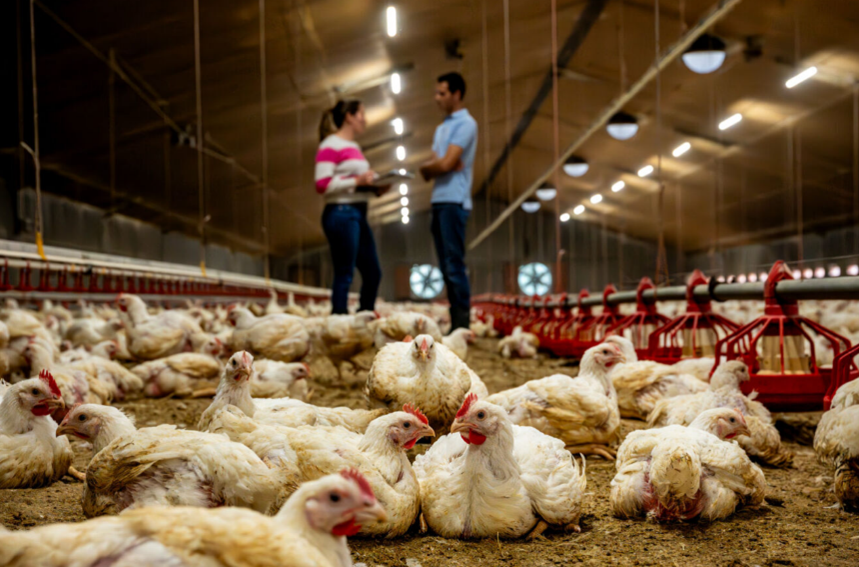
Inspiring livestock farmers with demos
In addition to collecting data, the RAMBO project also focuses on practice. Livestock farmers often have questions about the feasibility of measures and techniques to reduce emissions for their own farms. To support them in this, the RAMBO partners organize several demonstrations and meetings. During the first project year, four successful editions of 'Tour de Boer' were organized, spread across Flanders and the Netherlands. The two for pig farming attracted a total of 107 interested people, the two for poultry farming had a total of 81 participants.
"A 'Tour de Boer' (Farmer Tour) offers a unique opportunity to see ammonia and methane reduction systems in action and discuss the pros and cons of the techniques with experts," says Bianca Aarts, project expert at ZLTO. Participants also hear from the livestock farmer on site about his experiences of use and can chat about the potential of the measure or technique visited. With six more 'Tour de Boer' sessions planned, the RAMBO partners continue to actively guide livestock farmers in choosing the right emission reducing measures. Interested parties can register with one of the RAMBO partners.
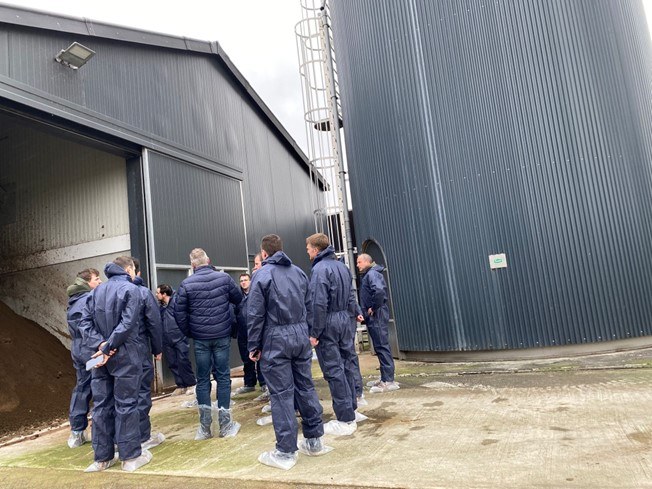
Implementation guidance
Already 37 livestock farmers have registered within the RAMBO project for individual coaching tailored to their farm. After an introductory interview and company visit with an expert in air emissions, they start looking for feasible solutions together. "Many livestock farmers need objective and supportive advice in drawing up a reduction strategy that best suits their farm. With our knowledge from research and practical experiences from pioneering farms, we help searching pig and poultry farmers on their way. First we map out the needs and wishes, then determine which techniques, measures or adjustments are most suitable and then draw up an action plan. Everything is done in close consultation with the livestock farmer so that the implementation is completely tailored to the farm," says Pieter-Jan Delbeke, climate & emissions consultant at Boerenbond.
Bart Naeyaert, West Flanders' deputy for agriculture adds, "With RAMBO, we don't just want to innovate, we want to implement. This project not only offers activities to demonstrate ammonia-reducing techniques and inform livestock farmers, but also provides guidance for their implementation."Reconciliation of animal welfare and ammonia emissions.
"Animal welfare and sustainability, such as reducing nitrogen emissions, are hot topics in the livestock industry. Supermarkets are demanding chickens and pigs that live longer and meet stricter welfare standards. But is it possible to raise these animals without increasing the environmental impact or driving up the price? This raises questions about broader implications for the sector, as many measures affect not only the livestock farmer, but also other links in the chain such as feed suppliers, hatcheries, propagators, processors and slaughterhouses," said Antwerp Deputy Commissioner for Agriculture Kathleen Helsen. "The importance of cooperation, project collaboration and thorough practical research is crucial for a future-oriented agriculture," added Deputy Helsen.
About Interreg-Vlaanderen-Netherlands project RAMBO
Inagro, Proefbedrijf Pluimveehouderij, ILVO, Boerenbond, ZLTO, Poortershaven Industrial Minerals, De Hoeve Innovatie, Province of West Flanders, Province of Antwerp, Province of East Flanders, the Agency for Innovation and Entrepreneurship of the Flemish government, the Barth Misset Fund, POVco, LIB (Stuurgroep Landbouw Innovatie Noord-Brabant) and Province of North Brabant are all working together under Interreg RAMBO, which started on September 1, 2023 and runs until August 31, 2026. Within this project, existing measures and techniques for poultry and pig farms are tested, demonstrated and evaluated for their applicability and efficiency to reduce ammonia emissions. The research should enable pig and poultry farmers to start working on their own to significantly reduce their ammonia emissions. Among other things, improvements in animal nutrition, housing, barn climate and management are being examined. In addition to ammonia, side effects such as methane emissions, animal health and welfare are also identified.
Stay informed
The RAMBO project partners inform stakeholders from the pig and poultry industry through their project website: https://interregvlaned.eu/ramb.... All results of trials, invitations and reports of activities and other project news can be followed there.
Host location of the press lunch: Poultry Industry Test Farm is a hands-on research center for poultry farming. As a test and demo site within the RAMBO project, measurements and evaluations are carried out to assess the impact of measures on ammonia emissions, performance, animal welfare and animal health. Through hands-on research in their unique pilot facilities for both layers and broilers, they help find solutions.
Morer info
https://interregvlaned.eu/rambo/over-ons - www.provincieantwerpen.be/RAMBO
RAMBO is a project of Interreg Flanders-Netherlands in cooperation with:
